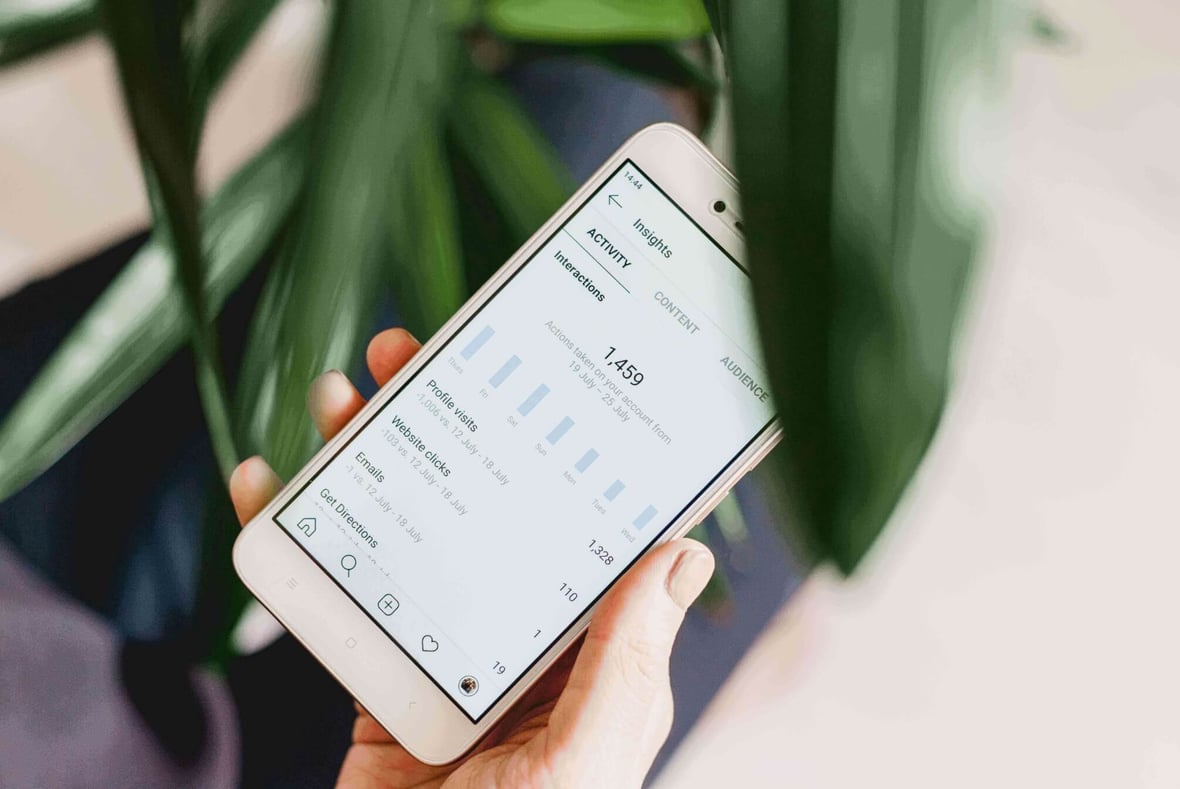
Should Your Bank Be Using Social Media Advertising?
June 13, 2019
By Tyler Smith
.jpg?width=4000&name=GettyImages-1089357478%20(1).jpg)
Today, social media sites are well-established marketing channels. Most businesses have set up accounts on the big three: Facebook, Twitter, and LinkedIn. Companies that haven’t set up accounts typically claim that social media doesn’t offer much value for their business. Banks often fall into this group.
The assumptions that business owners make about social media aren’t necessarily wrong. Creating a Facebook page for your bank won’t bring in droves of new customers and people aren’t going to start following your bank’s social accounts just because you created one—but these realities don’t mean there isn’t any value to social media.
If you use it correctly, social media can have a significant impact on the growth of your financial institution.
Why Spend Time Developing Company Social Accounts?
There’s only one currency required to set up your company’s social media accounts: time. If you haven’t set up yours, you’ve likely concluded that the time isn’t worth the return.
The American Bankers Association disagrees.
According to their research survey, The State of Social Media in Banking, there are many reasons banks should spend time building their social profiles.
The survey asked participants questions about the following:
- How banks are taking advantage of social media
- Where they see challenges and opportunities
- What the future is likely to bring
The findings revealed that:
1. Social media is a powerful way to boost the brand.
Even small banks have raised their profiles to thousands of likes and tens of thousands of views with community-minded posts and viral videos.
2. Social media programs are still maturing.
Most banks have been in social media for only a few years, while others are just starting. Of those who are set up, a large percentage are not using social media very actively yet. With less competition, your bank will have a better chance of standing out with a strong presence.
3. There’s a lot of work to be done in strategy and implementation.
Only a small number of banks have established clear plans, goals, governance, and training programs for their use of social media.
4. Banks are forgoing opportunities.
About one-quarter of banks have no plans to use social media for managing complaints, customer service, or recruiting—areas where other banks are seeing notable successes.
5. Giving employees a voice can be a great benefit.
The risks of expanding employee advocacy can be mitigated by providing pre-approved content, strong policy, and proper training.
6. Governance concerns can be resolved with management software.
About half of banks use software or technology from a third-party provider to help monitor or manage social media content or compliance.
7. Clicks and views are less meaningful than engagement.
Awareness and goodwill generated with social media lead to more in-depth conversations that lead to business wins.
8. Social media can be the foundation of an advertising program.
Most banks use newspaper advertising (87 percent), in-person events (85 percent), radio (73 percent), direct mail (73 percent), email (71 percent), and other outbound channels, but for very little investment, a social media presence can create a two-way conversation that draws mainstream media attention and free advertising.
9. Social media will get more costly.
Channels such as Facebook are changing their algorithms in ways that pressure commercial enterprises to pay for views, either by advertising or boosting posts.
10. Banks can’t afford not to be on social media.
A bank’s brand and market are out there on social media, for better or for worse. You are being talked about. You might as well know what is being said, so you can help shape the conversation and benefit from it.
Each takeaway points to one conclusion: Be on social media. The positives outweigh the negatives (i.e., time). If you’re following best practices, you’ll have multiple new, free marketing channels to share your bank’s messages and content. You’ll have a new way to interact with your customers and see what the online conversation around your brand is.
In 2o19, the benefits of social media aren’t luxuries. They’re necessities.
Organic vs. Paid Social Advertising
Now that you’ve (hopefully) been convinced of the power of social media, it’s time to consider how exactly you should be putting your accounts to use. Like any person or company that has a social account, you can share updates that include different forms of information. We recommend sharing your company’s content (i.e., any guides, e-books, checklists, and videos), helpful third-party content (i.e., relevant news articles, helpful posts, and webinars), and general company news or updates.
The key to quality organic posts is that they provide helpful, relevant, and/or interesting content that your audience wants to consume. Too many self-promotional posts will detour users who aren’t looking to see promotional messaging in their social media feeds. A helpful guide popping up in your feed is much easier to swallow, and hopefully more welcomed, than information about a company’s new product.
The other form of advertising on social media is paid ads. On all social channels, you can pay to have your company's message appear in users’ feeds, even if they don’t follow your channel. As consumers shift their banking behaviors to online channels, paid ads provide an opportunity to stand out among other local, regional, or national banks.
Although paid social media ads typically represent more traditional advertisements (i.e., promoting a product or service), you can also use ads to promote content like guides or videos. Depending on what service you’re promoting, content can generate more results than a self-promotional ad.
Paid social media campaigns are one of the most effective ways for your small-to-midsized bank to reach potential customers. With the right targeting, ad creative, tracking, and goal setting, your bank can stand out from the mix with a well-optimized paid social media strategy.
How to Get Started
What should I post? When should I post? What do I write?
These are just a few of the questions that spring to mind when getting started with social media. To help, let’s refer to our resident social media expert, Brooke Tomasetti, who wrote the post How to Use Social Media to Boost Premium Content Campaigns. Here she explains the best practices for posting on Facebook and Twitter:
- Posts with 100 characters or fewer get more engagement.
- Post at times your users are active (1 to 3 p.m. are normally peak hours).
- Post frequently, but not too frequently—you don’t want to be silent and then every four weeks, when you launch a content offer, be all over Facebook.
- Keep your tone casual and conversational.
- Don’t just post once—you worked hard on that piece of content! Schedule a few posts spaced out and with different copy and/or images.
- Spend some dollars. Paid Facebook ads work for B2B. Use best practices and create a new ad set promoting your next premium content piece.
- Shorter copy is better.
- Action-oriented copy (download, learn, click, and so on) gets more engagement.
- Do some research to see what hashtags are popular in your industry, and use two or three with each tweet.
- Plan and schedule five or so tweets you’ll use to promote a content piece will help you plan what hashtags and messaging you want to use.
- Find more tips here.
For paid social ads, there’s a bit more you should know before you get started.
Luckily, we have a handy guide that shows you:
- How to set paid social goals
- How to choose the right advertising platform based on your goals
- How to report on your successes
- Specific tactics and tools for reaching your goals
You’re well on your way to building a quality social media presence for your bank!

About the author
Tyler Smith was formerly an Inbound Marketing Strategist at SmartBug Media. He recognizes how critical an established content process is to the successful growth of any company's online presence and lead generation. Tyler excels in using the digital and inbound marketing methods that make sense for each unique business to grow their customer base. Read more articles by Tyler Smith.





















